Affiliate links on Android Authority may earn us a commission. Learn more.
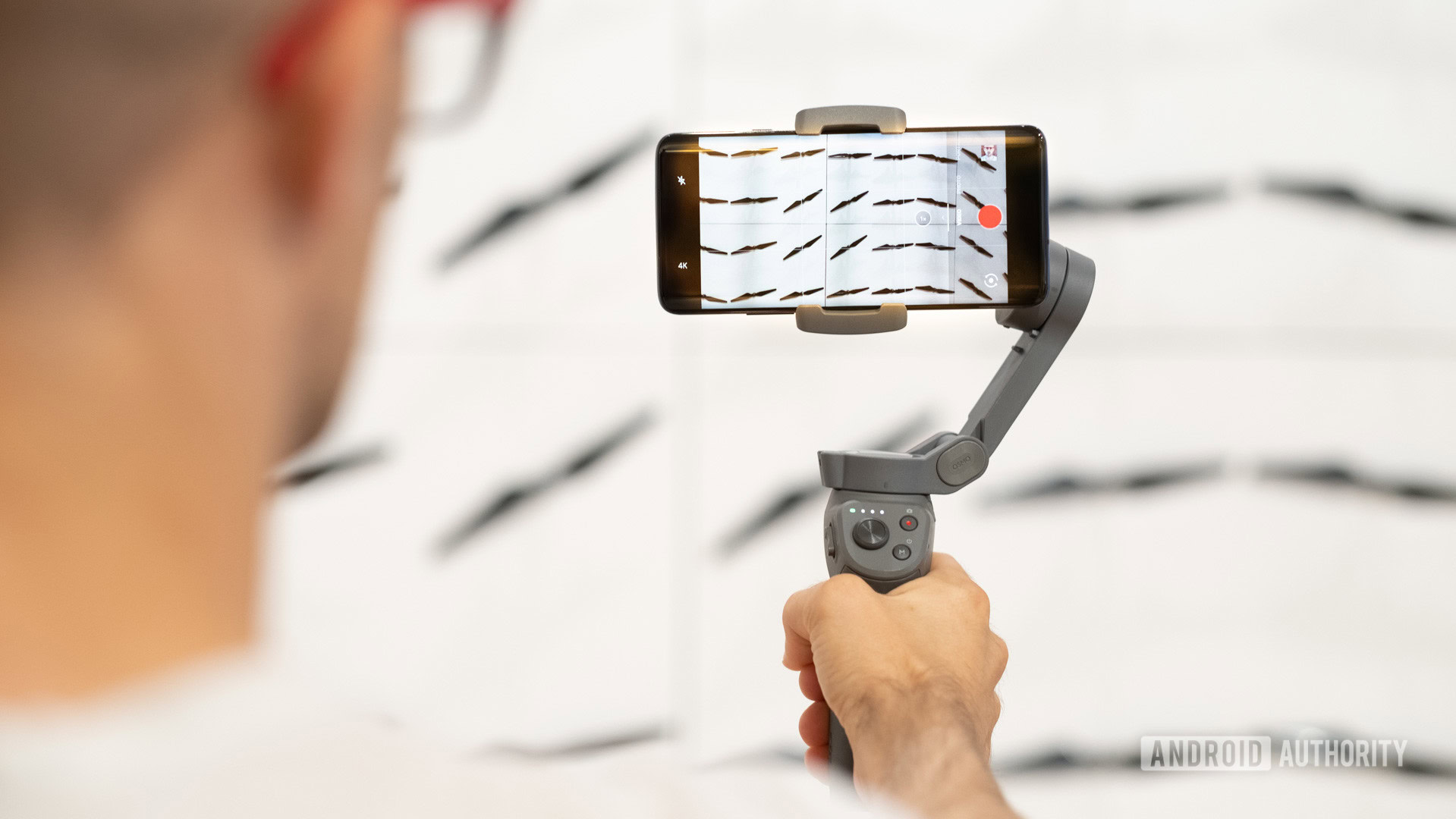
DJI Osmo Mobile 3
MSRP:
What we like
What we don't like
DJI Osmo Mobile 3
There are lots of different smartphone gimbals out there that will help you capture some amazingly-smooth video footage using your phone. However, in this DJI Osmo Mobile 3 review, we’re going to tell you about the tricks up its sleeve that sets it apart from the pack.
As the name suggests, this is the third generation in the Osmo Mobile line. It’s very clear that DJI has learned what its customers want from the past two models and tried to incorporate as many of those preferences as it could into this new device.
Overall, the DJI Osmo Mobile 3 may be one of the best consumer-grade smartphone gimbals you can buy — if not the best. However, there are still some aspects of the device that could be improved, as well as an existing product that might be an even better choice for some users.
Check out our DJI Osmo Mobile 3 review below for all the details!
See also: The best smartphone gimbals to spend your money on
Update, March 2021: Since originally publishing this review, DJI has launched a newer version of the gimbal. It has also dropped the price of this model. We have updated the Value and Verdict sections slightly to reflect this new pricing.
What’s a gimbal?
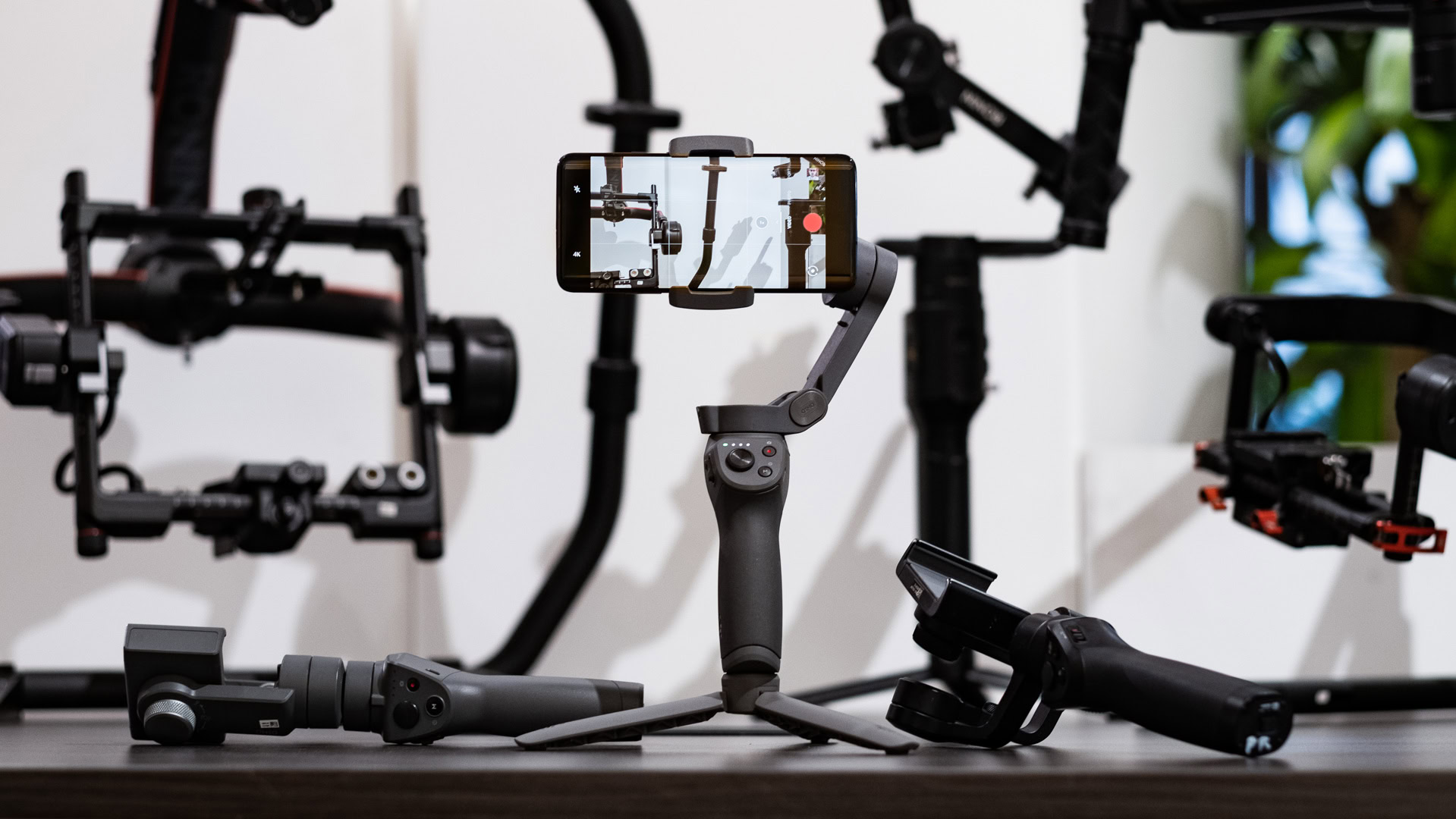
In photography and videography, a gimbal is an apparatus that allows for a camera to remain stable while the user is holding it. If you’ve ever noticed that your video output looks very shaky when filming, you already understand why gimbals are awesome.
Most modern smartphone gimbals are motorized, which makes video output super smooth. You can also connect most gimbals to your smartphone wirelessly using Bluetooth, which allows you to move the smartphone on a 3-axis plane (up, down, and sideways) using some sort of controller.
Related: ZHIYUN Smooth-Q2 review: Ultra-portable smartphone gimbal
In general, every smartphone gimbal you buy is going to have a spot in which you’ll snap your smartphone as well as a grip for your hand. You usually control most of the gimbal features with your thumb, which can include record/stop buttons, a movement controller, a power button, etc.
The DJI Osmo Mobile 3 looks like your typical gimbal in many respects, but it has some unique features that we’ll get to in a bit.
DJI Osmo Mobile 3 review: The big picture
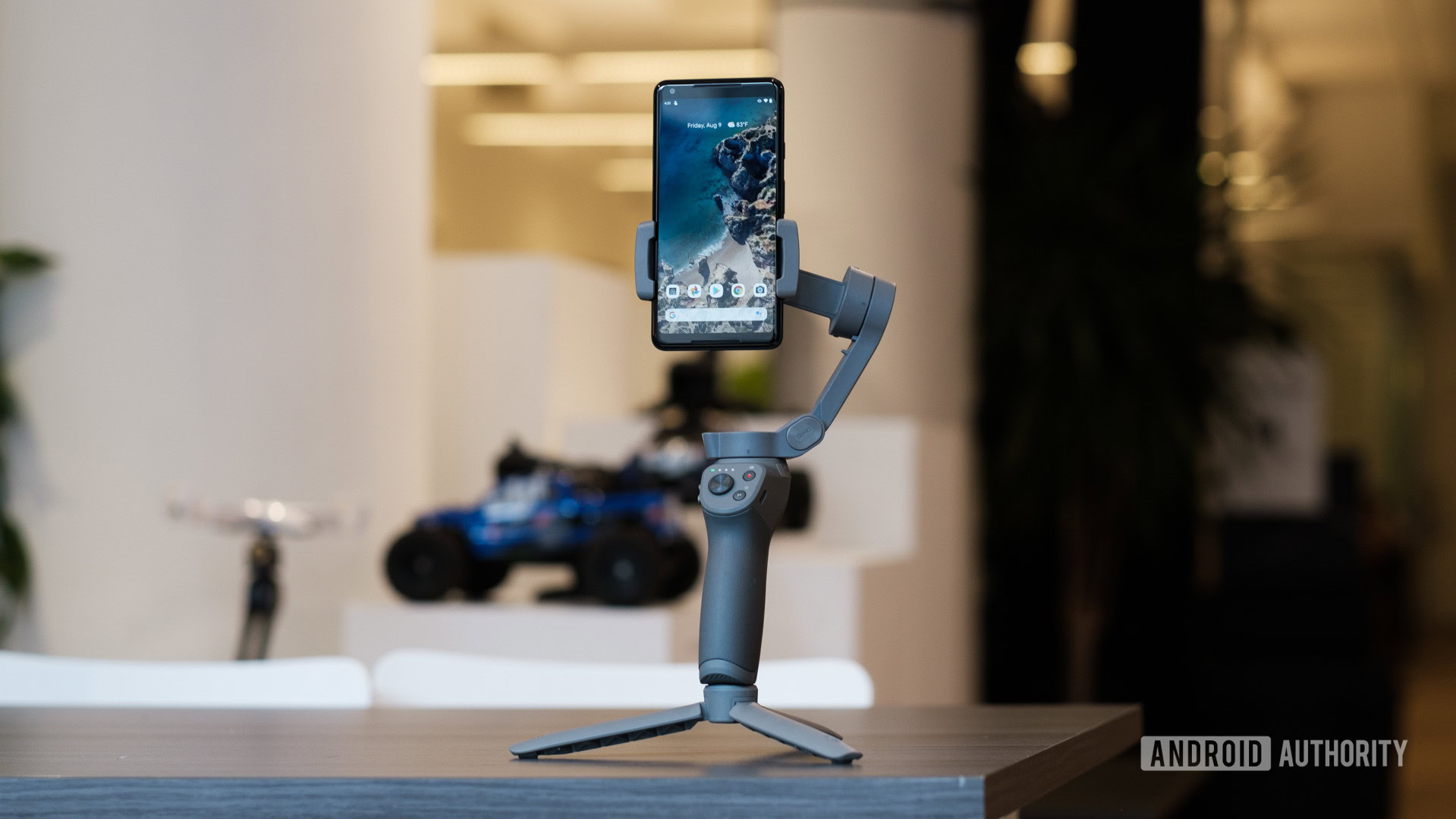
The most important feature of the DJI Osmo Mobile 3 is the fact that it folds up. This solves one of the biggest pain points when it comes to smartphone gimbals, which is that they are usually too big for traveling light.
Honestly, the fact that the Osmo Mobile 3 folds up is probably enough to make smartphone videographers take out their wallets and buy one. Even if the gimbal’s other features were dismal, the idea of not having to buy a huge backpack to carry around your gimbal is amazing.
Without a doubt, that the Osmo Mobile 3 folds up for easy transport is a true game-changer.
Luckily, the Osmo Mobile 3 has all the features one would expect, including the return of the gimbal trigger (which for some strange reason DJI left out of the Osmo Mobile 2). It also has some exclusive features, such as Active Track and Face Track, as well as an automatic way to swap your phone from portrait mode into landscape mode and back again.
What’s in the box?
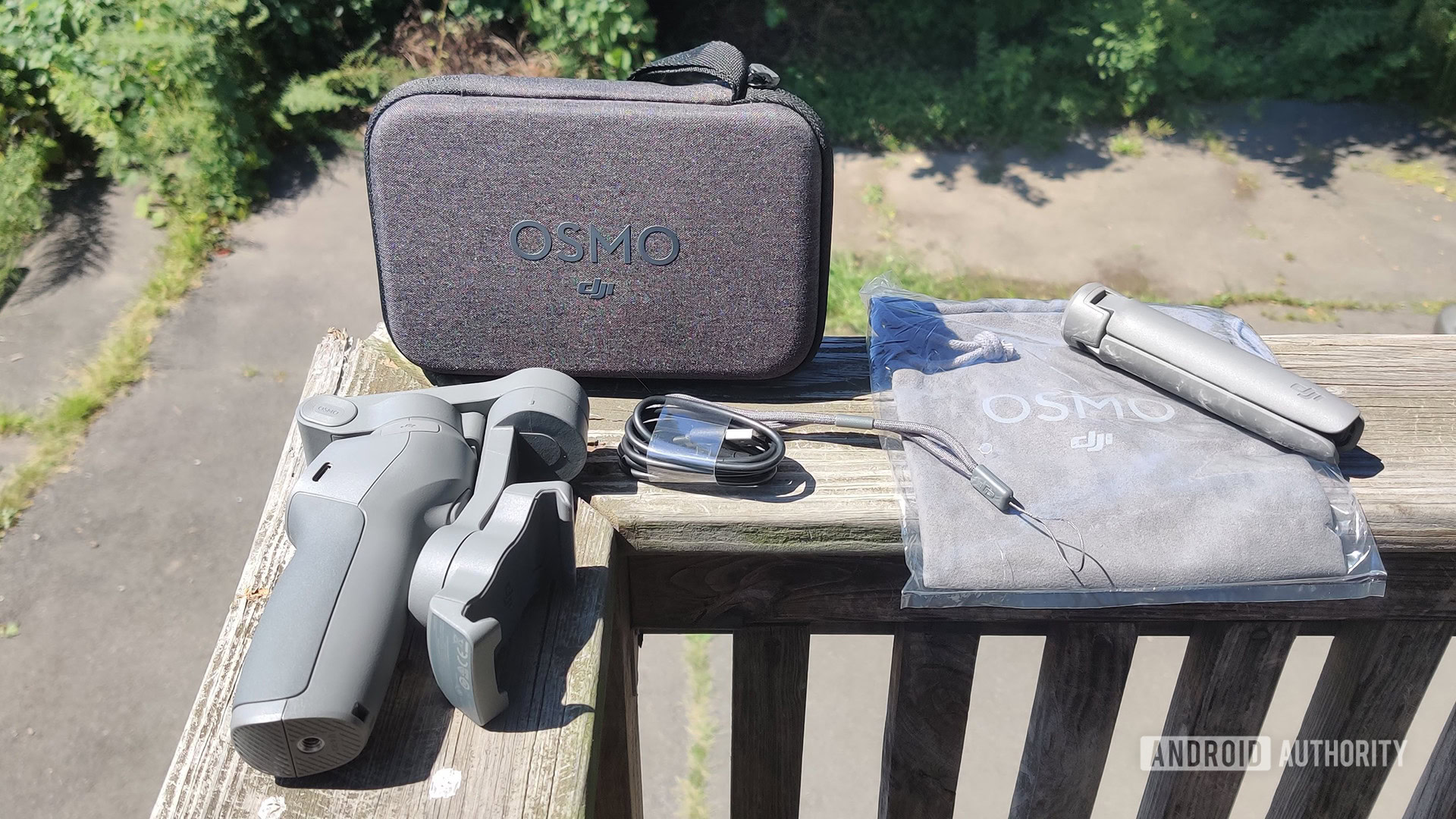
- DJI Osmo Mobile 3 gimbal
- USB-C to USB-A charging cable
- Wrist strap for gimbal
- Soft carrying bag
Above, you’ll see a list of the items that come in the retail box with the standard edition of the Osmo Mobile 3. However, DJI offers an upgraded version — known as the Combo version — which includes all the items in the picture above for a little extra cash.
The hardshell case and the tripod stand you see in the photo are not included with the standard edition of the Osmo Mobile 3, which is unfortunate. If you want those two accessories, you’ll pay $20 more for the Combo version.
In the case of the tripod stand, though, you could easily buy a third-party stand for much less than $20. The tripod mount on the bottom of the Osmo Mobile 3 is of standard size, so you could also screw it into a regular tripod if you wanted.
The hardshell case is a nice accessory, but it curiously does not have enough room to also hold the tripod stand. This is a weird design choice. Instead, only the gimbal and its charging cable will fit into the case.
Design and specs
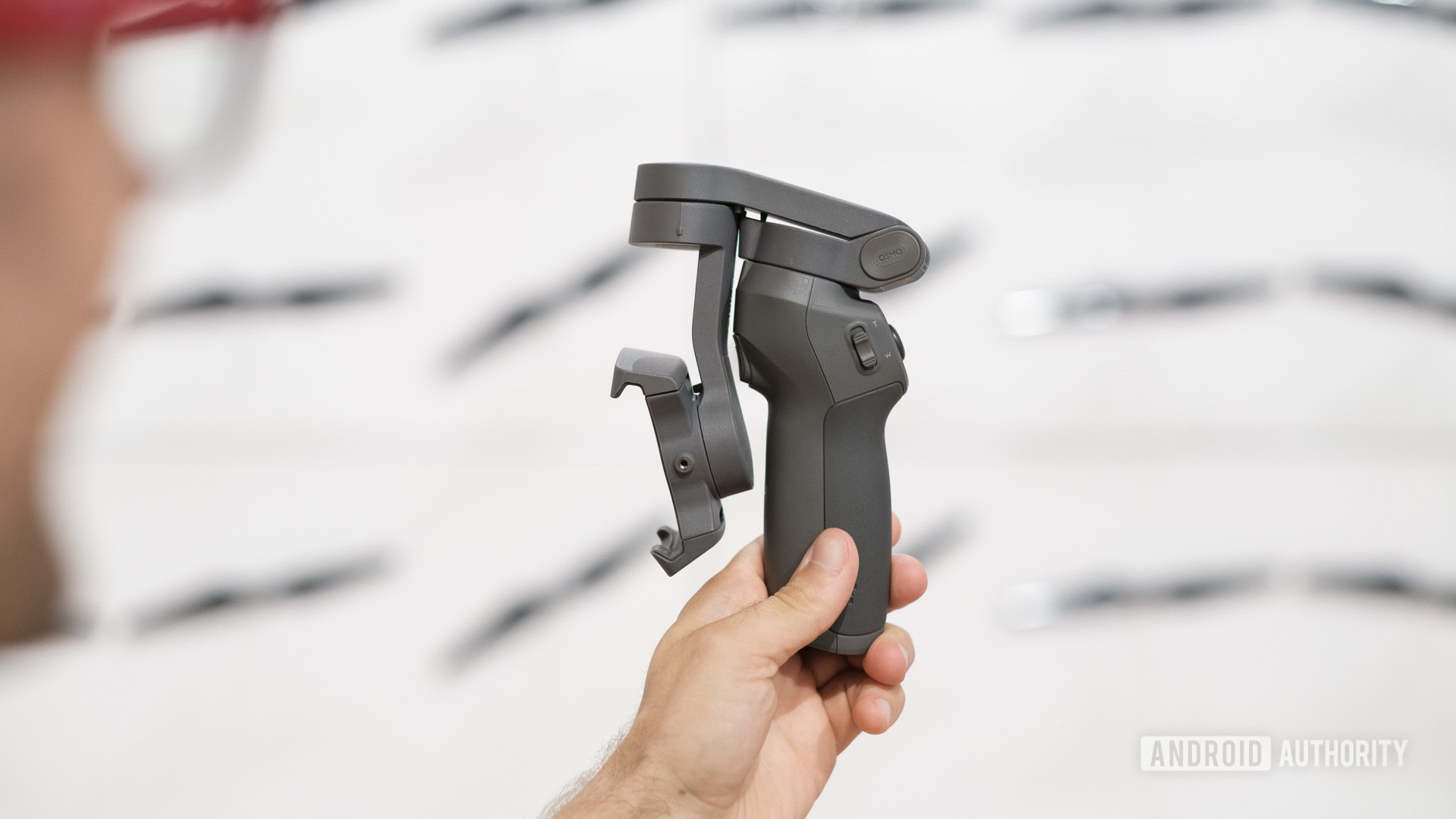
- Unfolded: 285 × 125 × 103mm
- Folded: 157 × 130 × 46mm
- 405g (plastic build)
- 2,450mAh battery (USB-C charging)
- 2.5 hours to fully charge (w/10W charger)
- Bluetooth 5.0
Just like the Osmo Mobile 2, the DJI Osmo Mobile 3 is made totally of plastic (no magnesium alloy highlights like on the original Osmo Mobile). Don’t let that sway you into thinking that the device feels cheap: on the contrary, the 405g weight of the gimbal feels pretty premium.
The plastic build also makes me feel more comfortable about running the device through the wringer. Although I didn’t test the gimbal for durability, I feel like I could toss the thing off a cliff and it would still work.
The gimbal can handle smartphones as heavy as 230g (at the very maximum) and as wide as 88mm. Your phone will need to be under 9.5mm thick, so if you like big OtterBox cases, you’ll probably need to remove the case before snapping into the gimbal.
If your phone pushes past the 200g mark for weight, you could face issues using this gimbal.
For what it’s worth, I mostly used the OnePlus 7 Pro with the DJI Osmo Mobile 3, which weighs 206g. Everything worked just fine, even with the official OnePlus Sandstone case on it.
The main button panel on the front has three controllers: a record/stop button, a multi-function button, and a controller stick. Above the controller stick are some lights that give you an idea of how much battery power the gimbal has left.
Around the back, where you’d likely rest your index finger, there’s a trigger button. And, on the side, there’s a weighted slider that can control your smartphone camera’s zoom.
Shooting modes
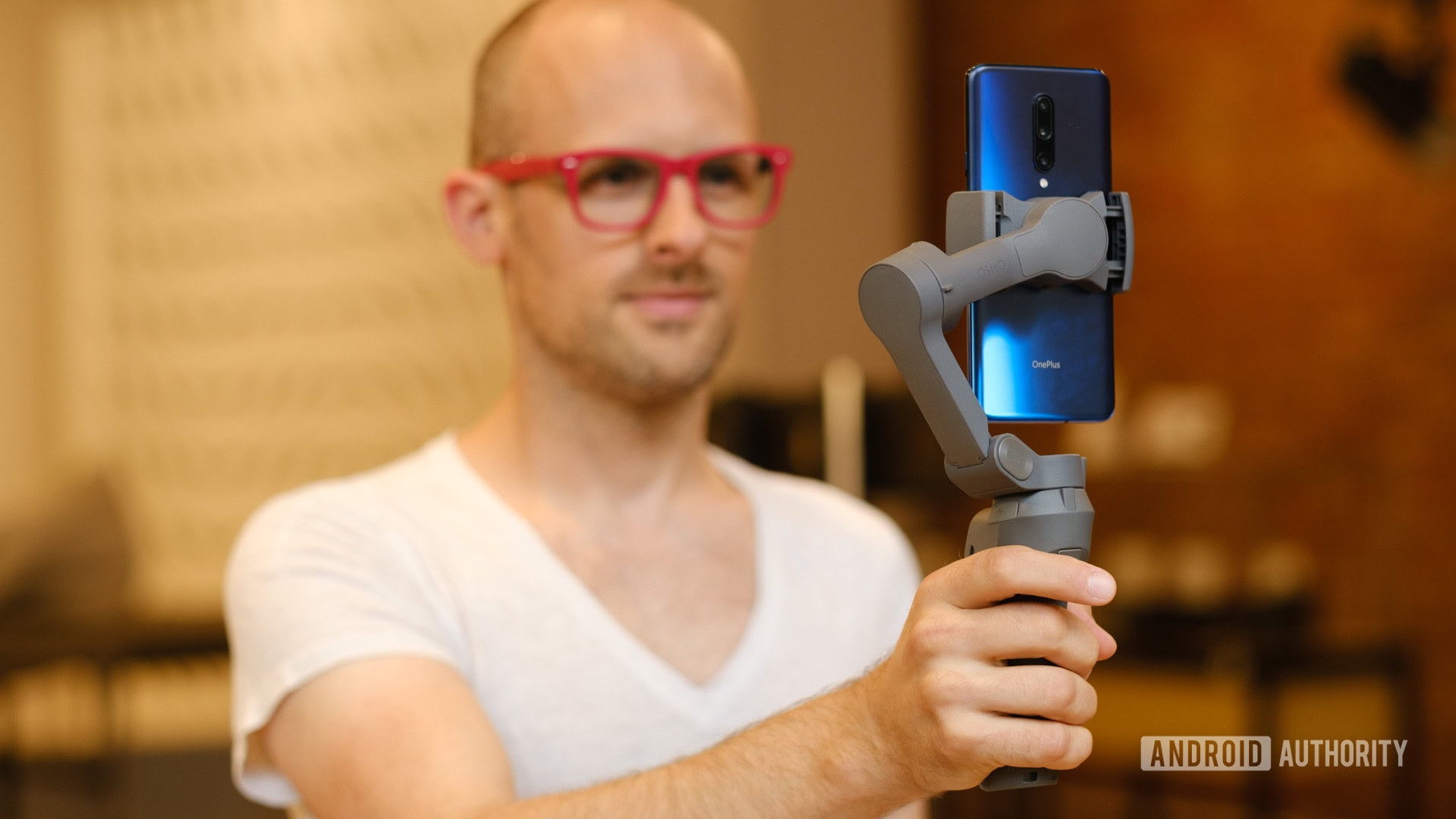
The DJI Osmo Mobile 3 does all the things you’d expect a smartphone gimbal to do: mechanical stabilization, pan/tilt control, timelapse/motionlapse, etc. Chances are good that if you own a smartphone gimbal, the Osmo Mobile 3 does nearly everything your current model does.
There is one notable exception, though: the Osmo Mobile 3 does not operate in the so-called “flashlight mode” using the rear-facing camera. This mode is where you level out the gimbal so that the handle is perpendicular to your smartphone, kind of like a flashlight. Due to the way the Osmo Mobile 3 folds up, achieving the standard flashlight mode pose is impossible with your phone in landscape mode using the rear camera.
However, if you flip your phone into portrait mode and then hold the gimbal handle sideways, flashlight-style shooting is possible. Luckily, it’s very easy to switch your phone into portrait mode using a button combo that’s new to the Osmo Mobile 3. Simply tap on the multi-function button twice in a row (like a double-click) and the gimbal will swap your phone to portrait mode or back to landscape mode automatically.

Another new button combo allows you to automatically put your camera into selfie mode. To do this, just tap the trigger button (where your index finger rests) three times in a row.
Here are all the button combo features on the Osmo Mobile 3:
- Multi-function button:
- Long Press: Power on/off
- Single Press: Launch the Quick Menu or switch between photo/video mode (you can choose which one you like in Settings)
- Double Press: Switch phone orientation from portrait to landscape and back
- Triple Press: Switch to flashlight mode (selfie camera use only)
- Record button:
- Single Press: Record/stop/take photo
- Rear trigger:
- Hold: Lock smartphone in place for stable shots
- Double Press: Re-center gimbal
- Triple Press: Turn on/off phone’s selfie camera
While you are shooting, you can use Active Track 3.0, the latest update to DJI’s auto-tracking feature. All you need to do is draw a box around a subject in the frame and then the gimbal will follow that subject. This is perfect for when you’re filming a sports game or your dog and want the gimbal to keep track of a quick-moving object.
Check out how that works in the GIF below:

As you can see, my girlfriend is walking at a fairly relaxed pace in the GIF, which Active Track 3.0 has no trouble following. However, if the subject starts moving very fast — or you move the gimbal itself very fast — Active Track will likely lose its ability to track the subject. Active Track will also have trouble tracking very small objects or objects that are quite far away. Your mileage will vary.
Similar to Active Track is face tracking, which works when your phone is in selfie mode. The Mimo app will find the nearest face and then automatically track it just like it would a subject you manually selected with Active Track.
The DJI Mimo app
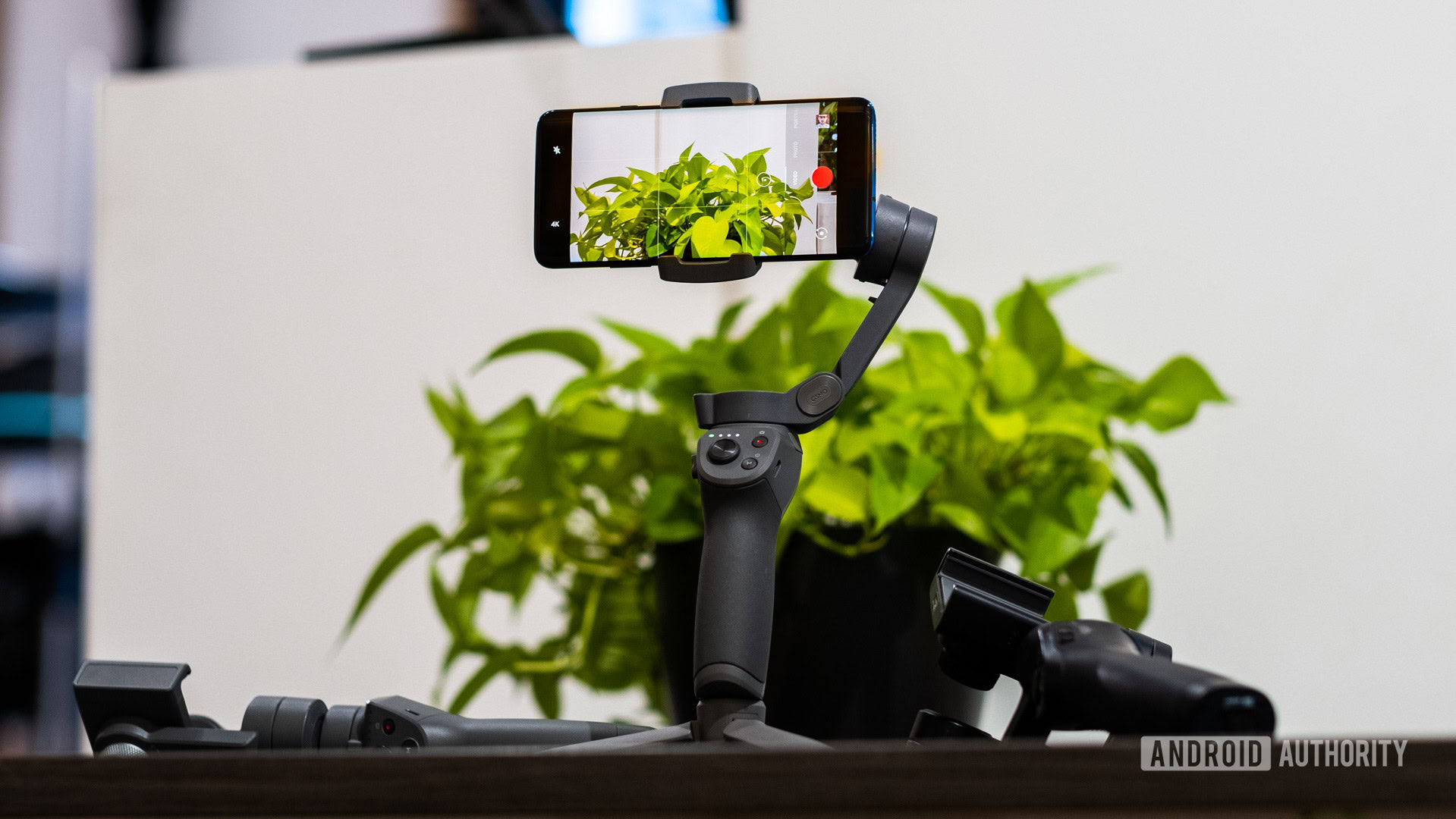
Since I own the DJI Osmo Pocket, I was already familiar with the DJI Mimo companion app. Mimo is like a camera app on steroids in that it allows you to control various photo/video settings while also tweaking settings for the physical controller you’re using — in this case, the Osmo Mobile 3.
Because you use one app to both control the gimbal and your photos/video, things can get a bit confusing. Sometimes you’ll open the settings panel to change something about the camera and find you’re in the settings for the gimbal or vice versa.
That being said, once you’ve set everything up to your liking, you shouldn’t need to mess with things too often. When you turn on the gimbal, your phone connects to it via Bluetooth 5.0. Then you open up the Mimo app and start filming. It’s really easy.
The Mimo app isn't the greatest, but it gets the job done. Luckily, you can use any camera app with the Osmo Mobile 3.
If you don’t like the Mimo app you don’t need to use it: you can film with any camera app you like, really. However, depending on the app, some of the physical controller buttons on the gimbal might not work. In that case, you would need to start/stop recording, zoom, etc. by touching your phone’s display, not the gimbal. This isn’t the end of the world, as the gimbal will still stabilize your shots and you can still use the controller and rear trigger to pan/tilt the gimbal.
The highlight of using the Mimo app, though, is Story Mode. This allows you to easily create little video clips — complete with pre-recorded music — on the fly. Simply start up Story Mode and follow the instructions; you’ll shoot little seconds-long clips one after another and then the app will patch them all together. In the end, you’ll have an edited set of clips with a soundtrack that you can easily share on social media. This is something your average camera app can’t do.
Video examples
Value and alternatives
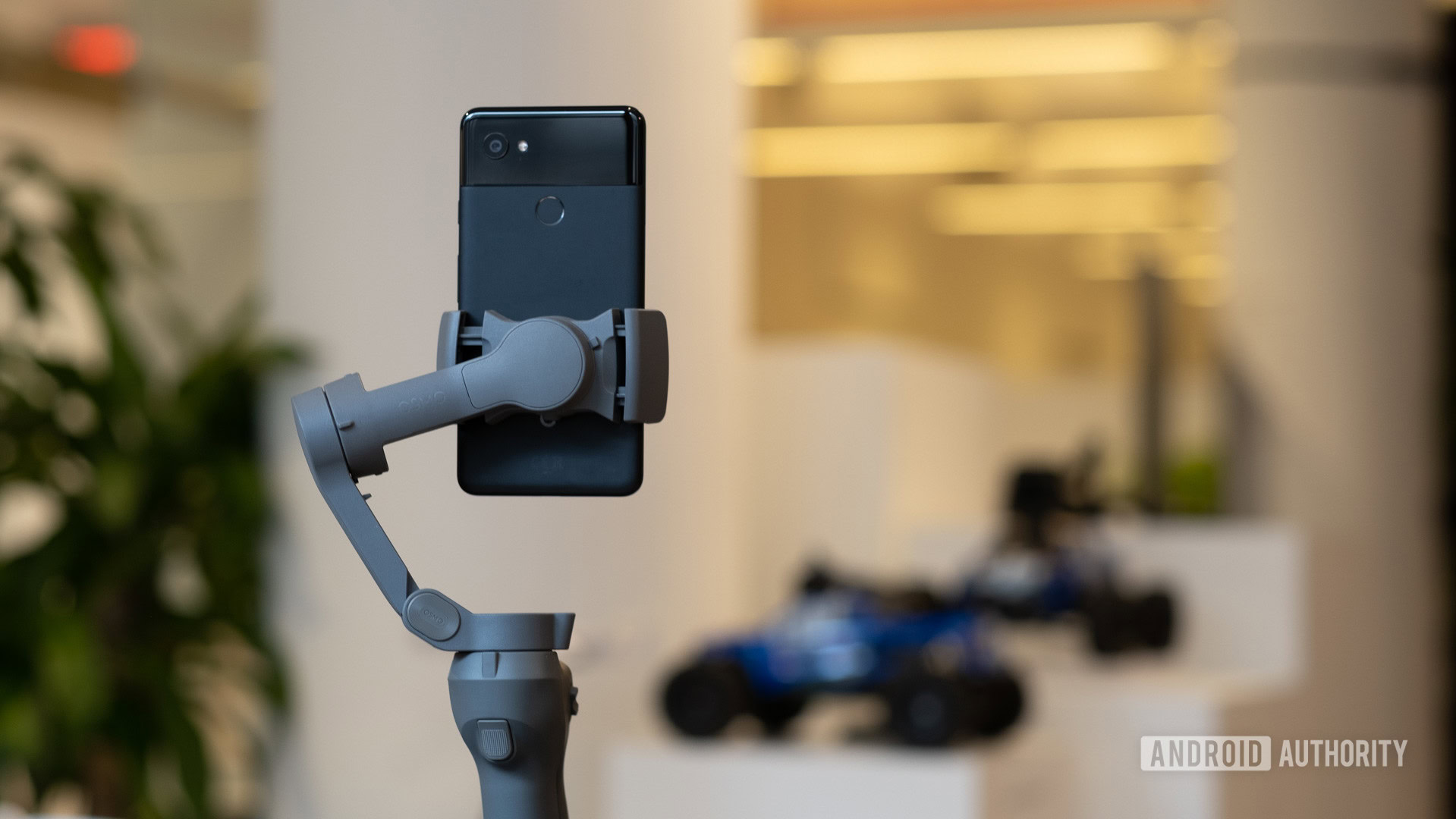
- DJI Osmo Mobile 3 (Standard) — $99
- DJI Osmo Mobile 3 Combo — $119
Originally, the Osmo Mobile 3 launched at a higher price than you see above. DJI has since dropped the price of each version by $20. Considering most smartphone gimbals clock in around the $100 range, the Osmo Mobile 3 is now priced very competitively. That being said, the standard edition lacks two crucial accessories: the hardshell case and the tripod stand. The hardshell case is an especially-notable omission, considering many smartphone gimbals over the $100 price point come with a hardshell case of some kind.
With that in mind, it’s hard to recommend buying the standard edition. The stand makes your life so much easier, and the case will help keep your gimbal from getting knocked about in your backpack.
At $119, the Combo version is the better buy. It’s only slightly more expensive than other gimbals, but the two extra accessories are totally worth it.
Before the DJI Osmo Mobile 3, my smartphone gimbals rarely got used, not because I didn’t like them but because they were so hard to transport. If I’m going on a hike and think I might get some good filming opportunities, the last thing I’m going to want to lug with me is a foot-long heavy plastic stick. A folded Osmo Mobile 3 solves this problem, and that’s definitely worth some extra cash in my opinion.
As for alternatives from other brands, you can check out some of our other gimbal reviews below:
DJI Osmo Mobile 3 review: The verdict
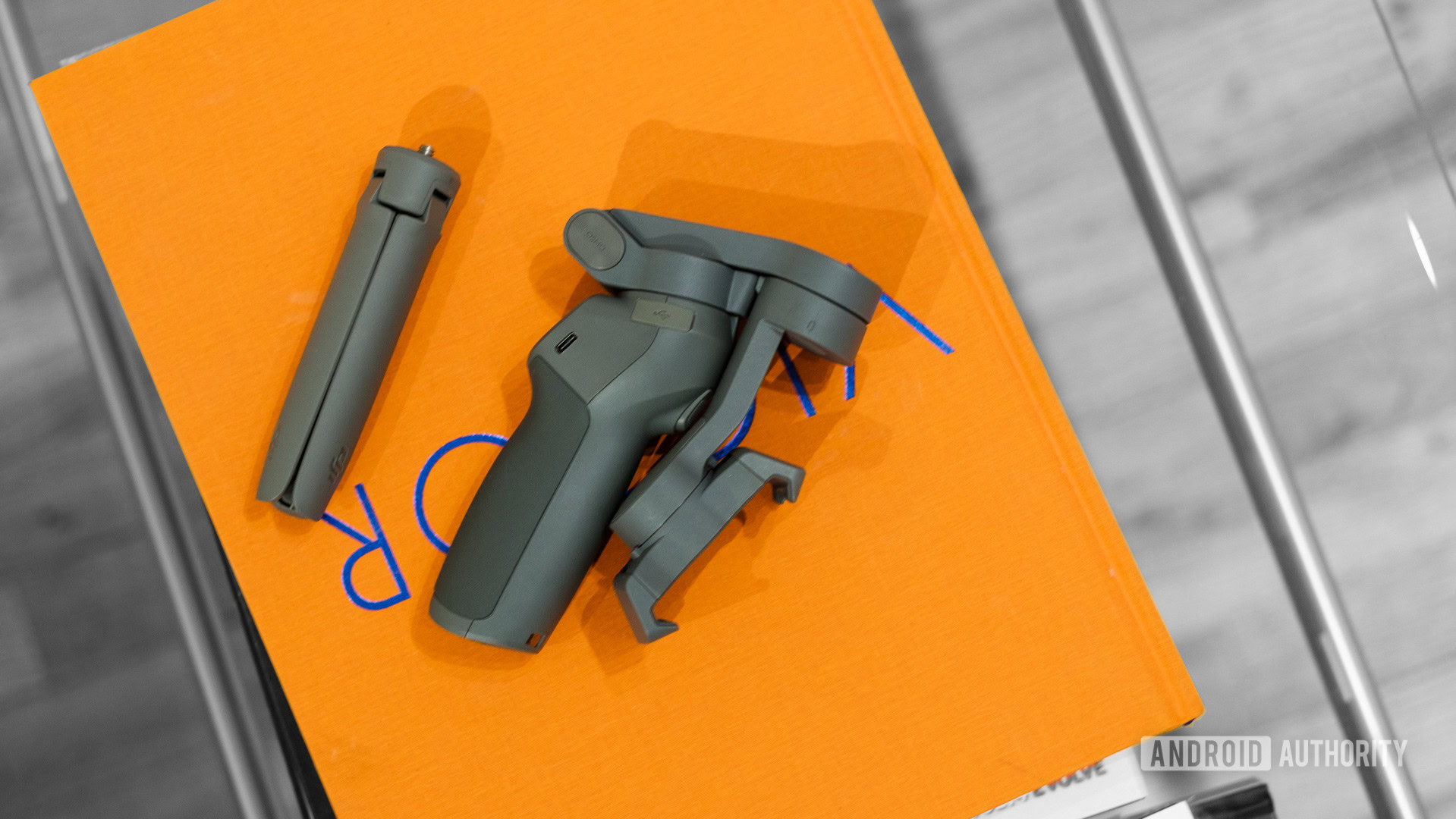
I am by no means a professional filmmaker, nor do I have tons of experience with the dozens of different gimbals one can find online. However, the DJI Osmo Mobile 3 is one of the best smartphone gimbals I’ve ever used and offers a terrific value as far as I can tell.
There are, as usual, some downsides to the product. The lack of a straightforward flashlight mode is a pretty big trade-off for the device folding up, and the Mimo app can be a bit confusing. Additionally, the fact that the hardshell case doesn’t also hold the tripod stand is a real head-scratcher. These are minor quibbles, though.
As a final note, do keep in mind that for ultra-portability, you should check out the DJI Pocket 2. This device offers a standalone gimbal experience that you can literally fit in your pocket — no smartphone needed. However, it is much more expensive than a smartphone gimbal.
Best smartphone photography accessories: Take your photos to the next level!
If you’re looking exclusively for a smartphone gimbal and aren’t interested in the Pocket, the Osmo Mobile 3 is one of the best choices you have at the moment.
